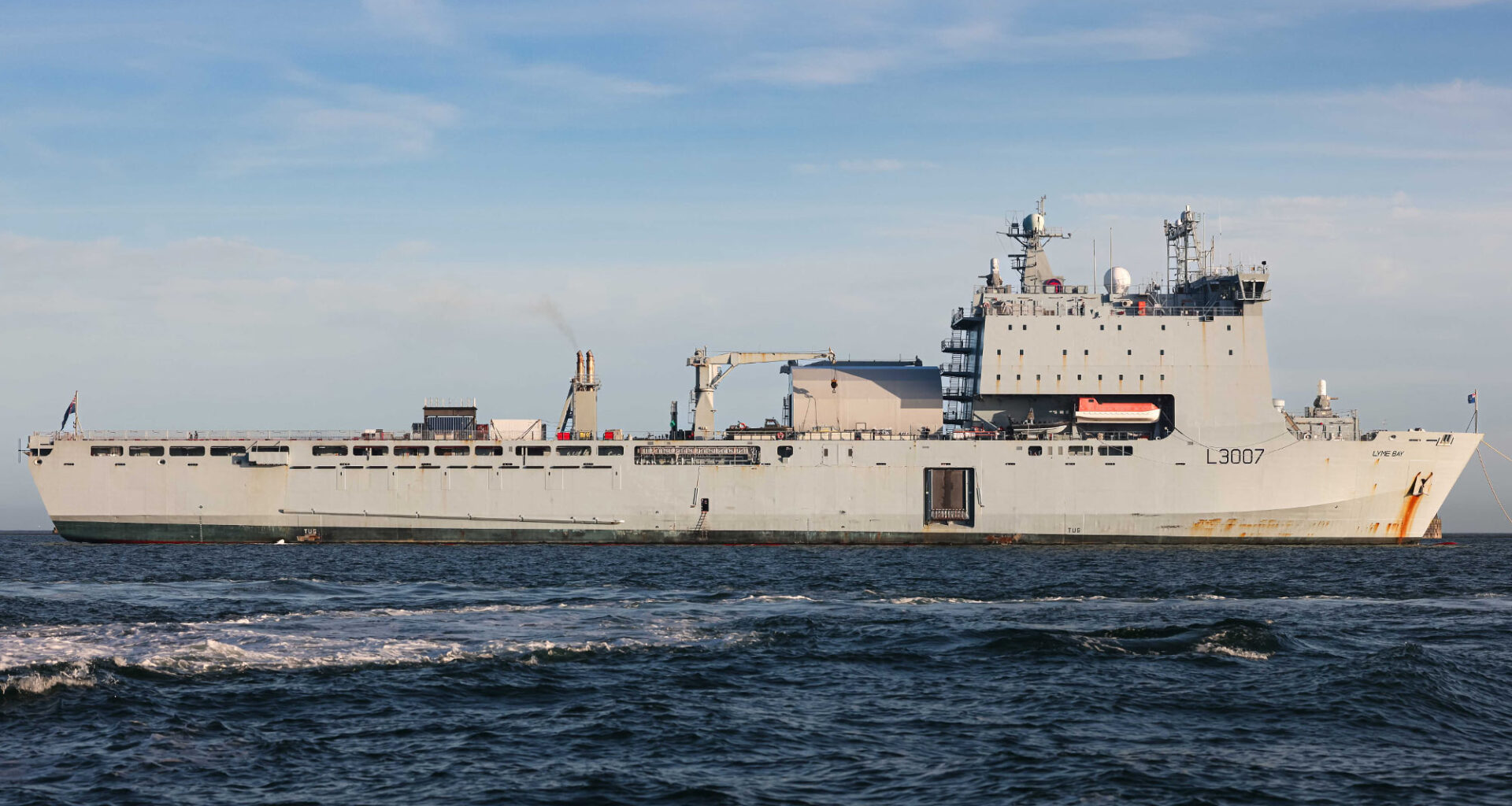Royal Marines have landed ashore in North Devon alongside French and Spanish troops as part of Exercise Catamaran, a large-scale amphibious warfare training event involving over 3,000 personnel from three nations.
This is the first time in seven years that Exercise Catamaran has been held, and the first activation of the Combined Joint Expeditionary Force (CJEF) since 2018. Led by France and supported by the Royal Navy, the two-phase exercise including 11 warships, is unfolding on both sides of the English Channel – first on the Devon coastline, and then off the French Atlantic coast.
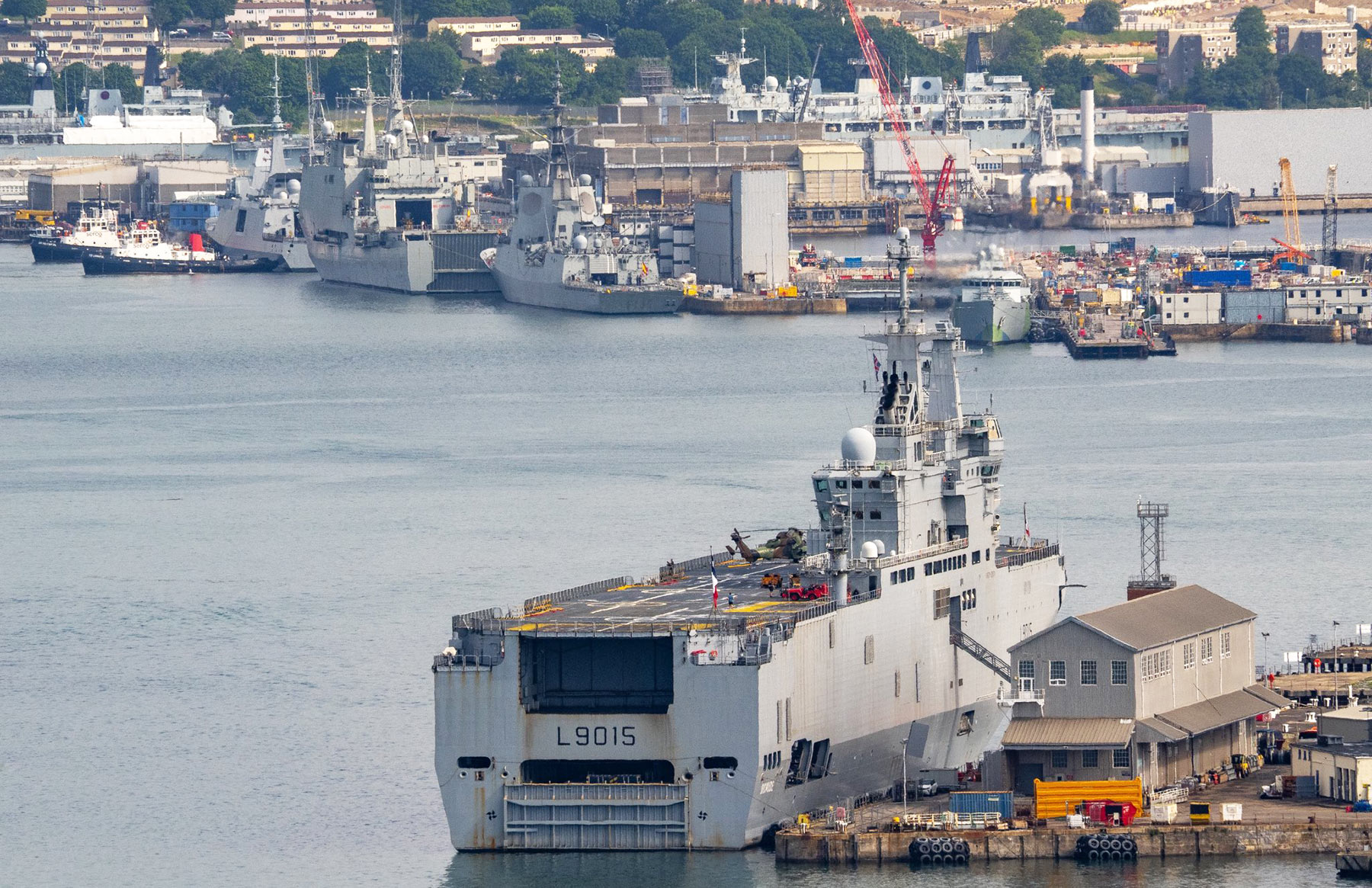 Some of the participating warships assembled in Devonport ahead of the exercise. Foreground: FS Dixmude, (HMS Severn centre) ESPS Cristobal Colon, ESPS Galicia and FS Bretagne. At the top of the image, decommissioned HMS Albion and HMS Bulwark await their fate (Photo: Tom Leach).
Some of the participating warships assembled in Devonport ahead of the exercise. Foreground: FS Dixmude, (HMS Severn centre) ESPS Cristobal Colon, ESPS Galicia and FS Bretagne. At the top of the image, decommissioned HMS Albion and HMS Bulwark await their fate (Photo: Tom Leach).
The UK contribution is centred around RFA Lyme Bay and RFA Argus, launching Royal Marines from 40 and 47 Commando onto the sand dunes at Braunton Burrows in North Devon. A mixture of seaborne and helicopter assaults supported by the Commando Helicopter Force, with three 845 NAS Merlin and two 847 NAS Wildcat helicopters.
With the RN’s entire active amphibious shipping down to just two auxiliaries, the heavy lifting is being done by the Marine Nationale, deploying the LPHs FS Dixmude and FS Tonnere, while the Spanish LPD ESPS Galicia is also participating. French, Spanish (and a small contingent of US Marines) were involved in the exercise, landing on the Devon beaches. The event is timed to coincide with the 80th anniversary of the D-Day landings, underscoring the enduring relevance of amphibious operations to European security.
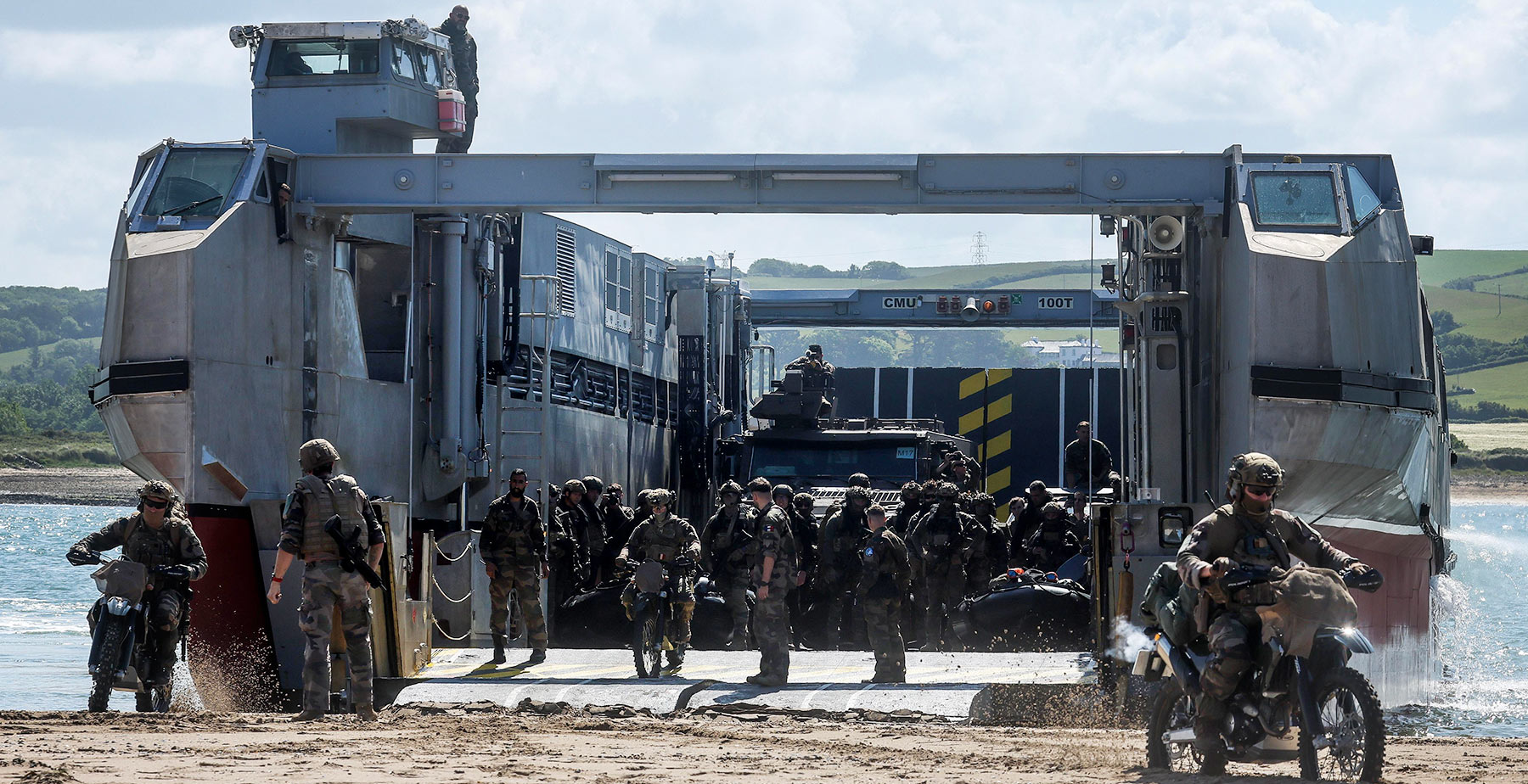 French marines come ashore from their high speed (Engin de débarquement amphibie rapide (EDA-R)) landing craft from FS Dixmude.
French marines come ashore from their high speed (Engin de débarquement amphibie rapide (EDA-R)) landing craft from FS Dixmude.
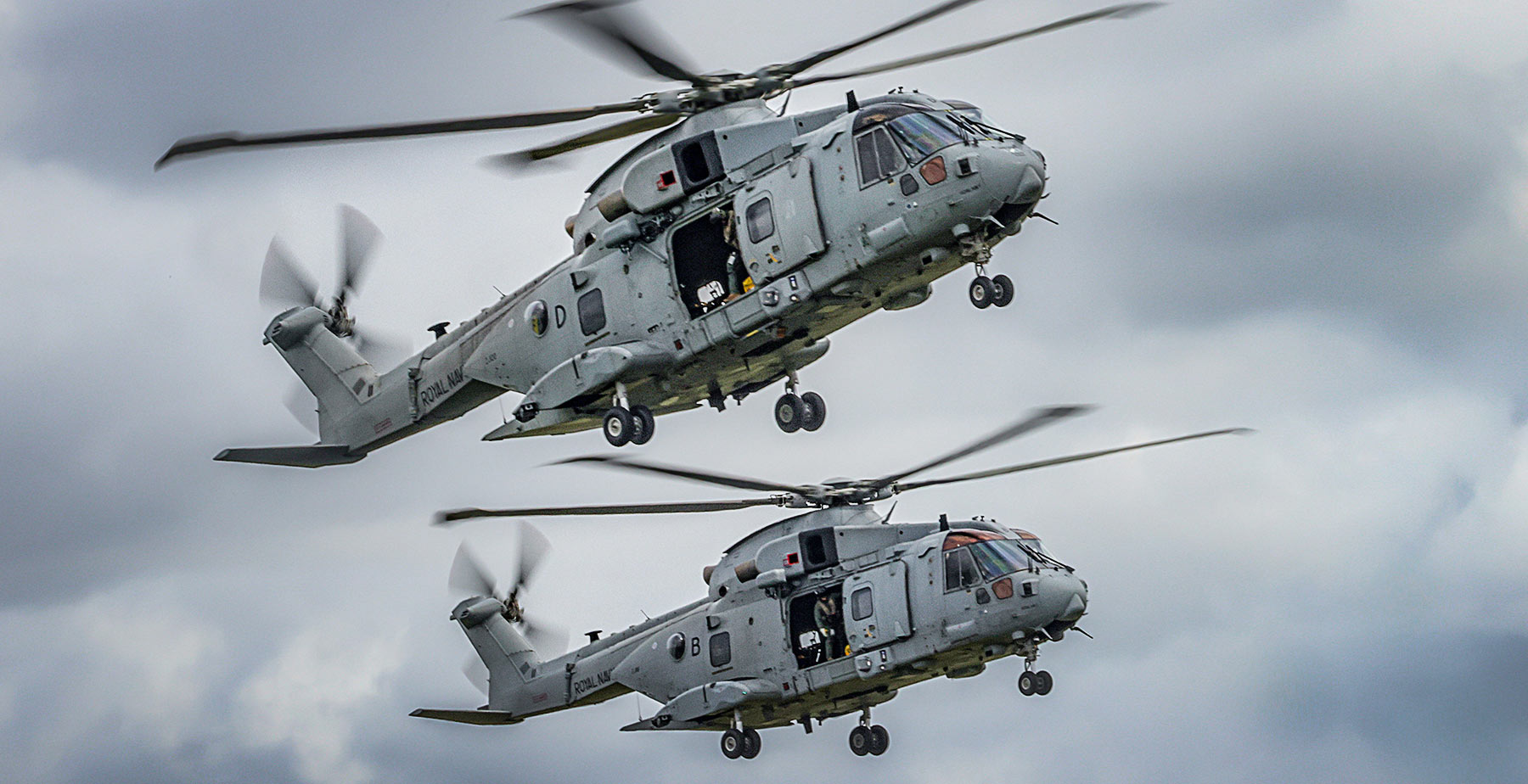 Merlin Mk4s operating from RFA Lyme Bay.
Merlin Mk4s operating from RFA Lyme Bay.
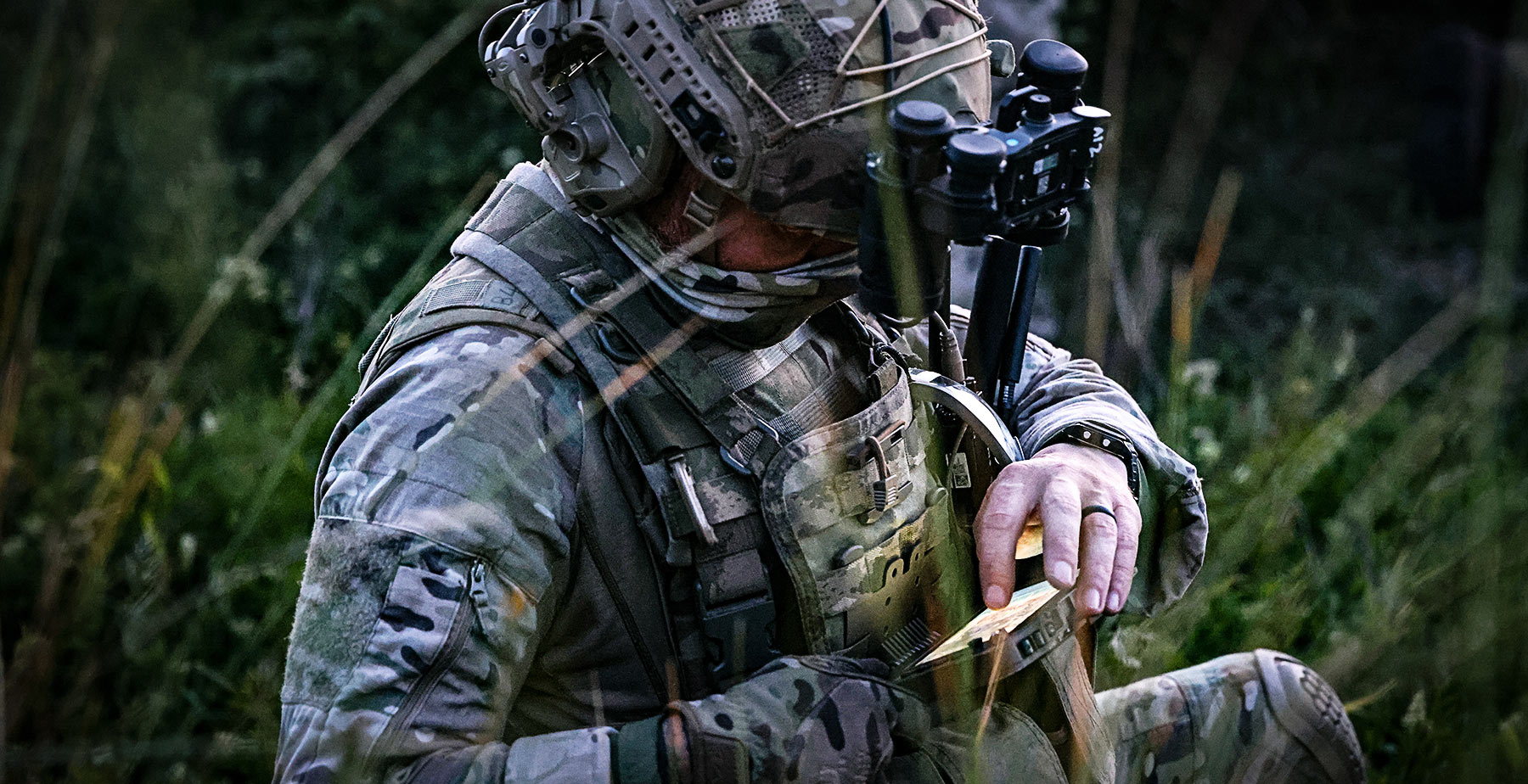 Royal Marine from Alpha Company, 40 Cdo operating a reconnaissance drone. Exercise Catamaran serves as another step in the transformation of UK Commando Force, now focused on littoral strike and rapid deployment.
Royal Marine from Alpha Company, 40 Cdo operating a reconnaissance drone. Exercise Catamaran serves as another step in the transformation of UK Commando Force, now focused on littoral strike and rapid deployment.
The CJEF was established under the 2010 Lancaster House Treaty between the UK and France to enable rapid joint responses to crises. Catamaran is part of the broader French-led Polaris 25 series, bringing together around 20 warships and 40 aircraft from NATO-aligned forces to rehearse complex joint operations in the Channel and Bay of Biscay. The second phase of the exercise, running from 7th – 15th June, will see training carried out in the Bay of Biscay, with Royal Marines operating from French ships and air assaults launched from RNAS Yeovilton onto the French coastline.
